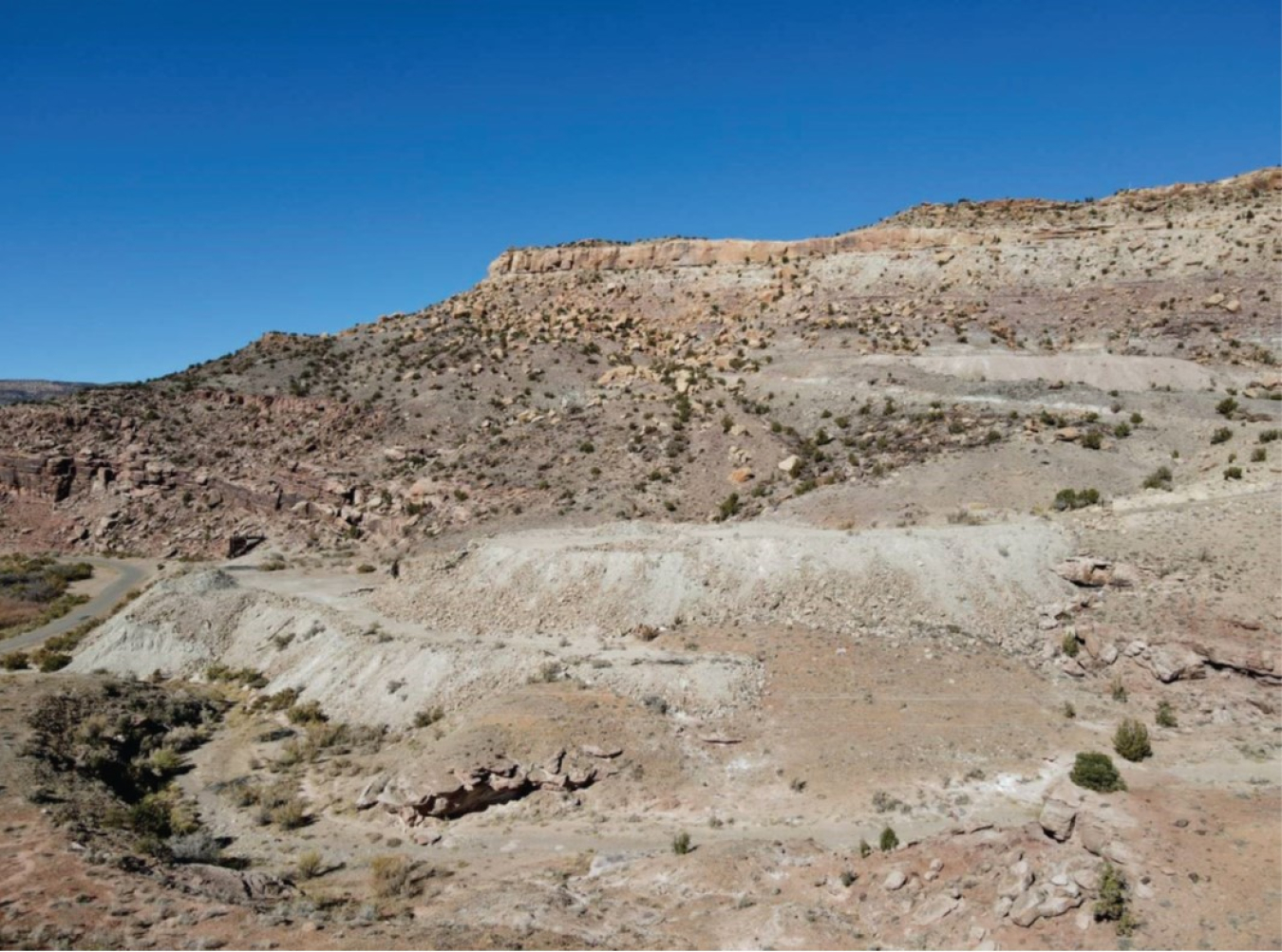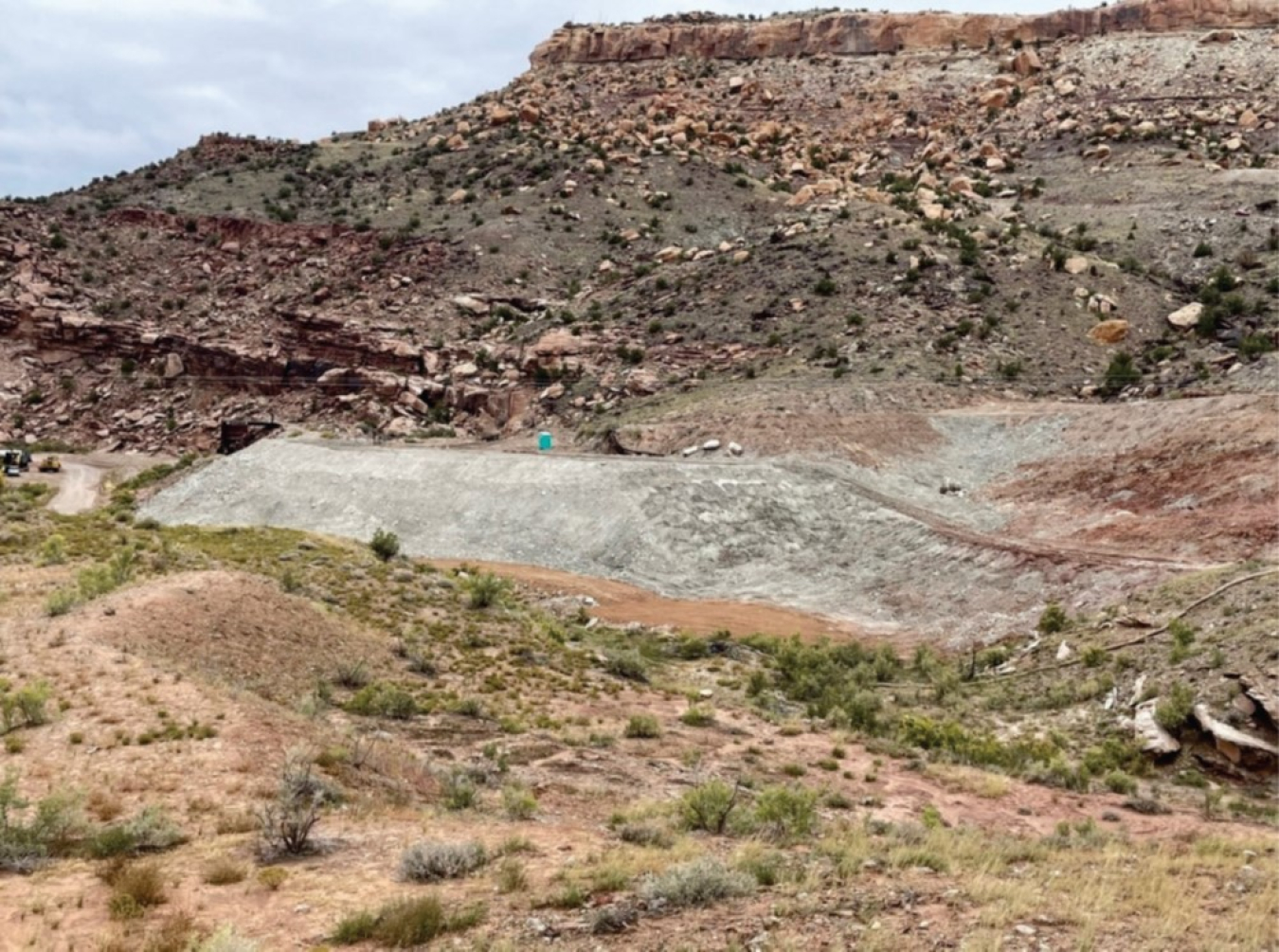LM works with four lessees on 29 parcels to mitigate physical hazards, ensuring the safety of the public, wildlife and livestock.
August 9, 2022Working with leaseholders, LM’s Uranium Leasing Program (ULP) has resumed mine reclamation work in southwest Colorado. The reclamation is done with an eye toward environmental stewardship.
In addition to its four lessees—Highbury Resources Inc., Gold Eagle Mining Inc., Golden Eagle Uranium LLC, and Consolidated Uranium — the ULP team also coordinates with the Bureau of Land Management, LM’s Defense-Related Uranium Mines (DRUM) program, the Colorado Division of Reclamation, Mining and Safety (DRMS), and private companies.
Some of the reclamation work is conducted by the lessees themselves under DOE’s Reclamation in Lieu of Royalties (RILOR) program. Lessees must pay an annual royalty to the government, but that payment can be reduced on a prorated basis for reclamation work performed by the lessee under the direction of DOE. The annual royalty is essentially the “rent” lessees pay to hold the mineral rights on a given lease tract.
“It saves money for both the government and the lessees. They save on royalties, and we save on the cost of bidding out the work,” said Engineer Brian Mangan, an LM Strategic Partner. “Safety closures and reclamation of pre-law mines reduces the U.S. government’s liability. It works really well. And the government wants to make sure the work is done properly so reclamation bonds are typically required.”
The area has a long mining history, dating to the 1910s when the Uravan Mineral Belt was first discovered. The Uravan Mineral Belt has seen several booms, including radium in the 1910s and 1920s, vanadium in the 1940s, and the big push for uranium starting in the late 1940s to 1970. Several smaller booms have occurred since the late 1970s and the region continues to be valued for its wealth of minerals today.
Much of the original mining on the lease tracts took place before federal and state laws had been enacted in the late 1970s to regulate mining activity and require post-closure responsibility. For most “pre-law” mines, also known as legacy mines, no environmental oversight or reclamation responsibilities were required of mining companies. When these pre-law mines on the lease tracts were abandoned, the responsibility fell to the DOE to close and reclaim the mines.
Several pre-law mines located on the lease tracts have been declared historic by the State of Colorado, so that history of the Uravan Mineral Belt may be preserved for future generations.
“We’ve done a huge amount of reclamation,” Mangan said.
Hundreds of mines were closed prior to a court injunction in 2011 that prohibited DOE from performing reclamation work on the lease tracts. A judge had found DOE’s ULP Preliminary Environmental Assessment deficient and in violation of the National Environmental Policy Act (NEPA) and the Endangered Species Act. The injunction was lifted in 2019, after LM completed a Programmatic Environmental Impact Statement for ULP, and reclamation work was able to resume.
Some of the reclamation work on the lease tracts involves mitigating hazards such as subsidences, where erosion and other factors have caused openings to develop into abandoned mines. The ULP team is also looking at the reclamation of the few remaining pre-law unreclaimed waste rock piles, the removal of noxious weeds, and items such as discarded tires located on the lease tracts.
“In these cases, we try to mitigate any physical hazards and stabilize the site as much as possible to prevent erosion,” Mangan said.
Though the waste rock piles often do have a radiological signature, the primary purpose of the reclamation work is to prevent erosion and help the establishment of native plant species. Still, preliminary gamma surveys of the site are often conducted in the interest of ALARA (as low as reasonably achievable), and to help guide the work of returning the land to a more natural form.
Some pre-law sites require more work than can be covered by an annual royalty and are added to a list of projects to be completed by DOE when funding is available.

Burro Tunnel Mine, Lease Tract C-SR-13, Slick Rock, Colorado, Prior to Reclamation

Burro Tunnel Mine, Lease Tract C-SR-13, Slick Rock, Colorado, After Reclamation
One such project was the reclamation of the Burro Mines Complex, which broke ground on June 21, 2021, and concluded on Oct. 26, 2021, well ahead of the Dec. 1 stop date necessary to protect desert bighorn sheep in the area.
The ULP team developed a proposal to reclaim the site in March 2016 after witnessing a series of heavy storms that inundated the Slick Rock area during the previous decade and repeatedly swept mine waste rock material from the Burro Tunnel mine into the nearby Dolores River.
Over the course of the project, 72,117 cubic yards of waste rock were removed from the Burro Tunnel mine and relocated into a former gravel pit. The volume of waste rock exceeded LM’s objective by approximately 25 percent, as more waste rock was relocated than originally planned. It is the largest reclamation project undertaken by DOE to date.
Working with the Colorado State Historic Preservation Office (SHPO), portions of the waste rock piles at the Burro Mines Complex were determined to be historical. Therefore, only select areas of waste rock were removed and the historic portions were stabilized in place.
“This project exemplified LM working with SHPO to strike a balance between protecting the river and preserving the history of the complex,” said Miquette Gerber, ULP Project Manager.
Throughout the history of the program, ULP personnel have conducted cursory inspections at least monthly when weather permitted access to the lease tracts. Recently, ULP personnel were aided by DRUM personnel, who identified hazards at historic mining operations as part of their verification and validation (V&V) activities. In 2021, a wetter than average winter produced several new subsidences on the lease tracts, primarily on legacy mine sites.
When ULP personnel find a new hazard, the team temporarily mitigates the hazard by installing safety fencing to prevent entrapment of humans, livestock, and wildlife. These newly identified hazards are then added to the list of possible RILOR projects to be safeguarded or reclaimed in the near future.
Today, the permitted mines on the lease tracts are bonded to ensure reclamation. The full cost of mine reclamation, including any environmental reviews, is covered by these bonds, guaranteeing that each mine site will be reclaimed. Before a regulatory framework was created, no U.S. law compelled reclamation of abandoned mines. As a result, the State of Colorado and the U.S. government have since tightened regulations for miners, who now must post surety bonds before conducting activities on the leases.
“There’s no more just walking away,” Mangan said.
To date, DOE has completed final reclamation activities at 182 legacy (pre-law) mines and overseen the final reclamation of 13 permitted mines. Of the pre-law mines the ULP team has:
- Permanently closed 199 mine portals and other mine openings.
- Fabricated and installed 74 bat gates including 23 culvert bat gates.
- Permanently closed 19 shafts and 137 vent raises.
- Backfilled pits and trenches with 144,800 cubic yards of material.
- Recontoured and reclaimed 248,800 cubic yards of mine-waste-rock materials.
- Permanently closed 259 exploration drill holes.
- Reseeded about 185 acres of disturbed land with native species.

